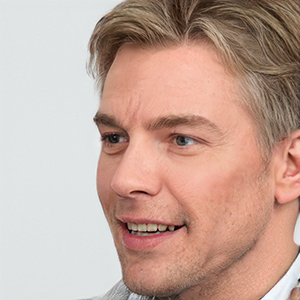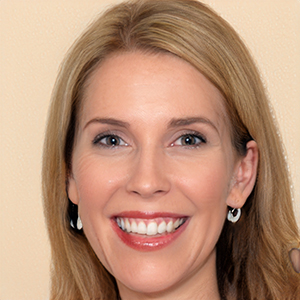Introduction to Health & Social Care
Health and social care provider offer integrated services to the people. These integrated services falls under the area of health and social care. It includes the elements related to sociology, nutrition, law, biology and ethics. Physiological health and social care include the care services that aim at improving the basic functions of human body (Bernard, 2005). The physical, bio-electrical, mechanical and bio-chemical functions of humans in good health constitute the human physiology. It also includes the organ as well as cellular systems that make up these functions. Human physiological health is related to the proper functioning of organs and systems. This project report provides information on the structure and functioning of human body. The relationship between the body functioning and anatomy and physiology has been discussed. The report provides information on the ways that are used by the body for coordinating its internal activities.
KNOW THE STRUCTURE AND FUNCTIONING OF HUMAN BODY
Various metabolic activities that are essential for proper functioning of human body are :
Cellular Metabolism
A number of chemical reactions are carried out by the cell in order to function properly. Energy is needed for all these reactions to take place. This energy is derived by the plant cells from the process of photosynthesis. The source of energy for animals is the process of aerobic respiration. The chemical process occurring within all living cells is cellular metabolism.
ATP production is the goal of all metabolic systems. The process of conversion of food into ATP involves breakdown of food into basic units (Curtis, 2009). This includes the breakdown of proteins into amino acids, polysaccharides into glucose etc. This step is known as digestion. Glycolysis is the conversion of glucose into ATP. During this process two pyruvate molecules are produced. These pyruvates produced in glycolysis are further broken down in the process of aerobic respiration. In this process oxygen is required and energy is produced.
C 6 H12 O6 + 6 O ------------------> 6 CO + 6 H2O + energy (ATP)
There are two processes involved in aerobic respiration. They are the Kreb’s cycle and the Electron transport chain. Krebs’s cycle involves conversion of pyruvate molecules into ATP. The Kreb’s cycle delivers protons to the electron transport chain. These protons perform the function of providing energy that facilitates the pumping of hydrogen protons across inner mitochondrial membrane to the outer compartment (Goodier, 2009). This results in the production of a free energy potential due to the high concentration of the hydrogen protons. The hydrogen protons move down the concentration gradient. Through the process of phosphorylation the free energy of hydrogen protons id utilized to form ATP.
Homeostasis of internal fluid environment through excretion
Constant conditions in the internal environment of the body are maintained through the process of homeostasis. Relatively constant conditions are maintained in the body by the functions performed by all organs and tissues.
There are two stages involved in the transportation of extra-cellular fluid through all the body parts (Gorsky and Stepanov, 2000). The first stage includes the movement of blood through the body in the blood vessels. In the second stage, the movement of fluid occurs between the blood capillaries and the intercellular spaces between the tissue cells. During the process of picking up oxygen by the blood in the lungs, the lung alveoli release the carbon dioxide into the blood. Carbon dioxide is carried to the atmosphere through the in and out movement of the air through the lungs. Hence lungs help in the removal of carbon dioxide.
During the passage of blood through the kidneys, removal of other substances such as urea and uric acid from the plasma occurs (Schulkin, 2003). The excess of ions and water that might have accumulated in the extra-cellular fluid are also removed. The substances needed by the body are reabsorbed by the kidneys. The substances that are not required by the body are removed in the form of urine (Vargas and et.al., 2009). Hence continuous mixing of the extracellular fluid occurs in every part of the body which maintains homogeneity throughout the body.
Role of Endocrine system in cellular metabolism
Different types of hormones are secreted directly into the blood stream by the glands that comprise the Endocrine system. These hormones are chemical messengers that are transported by the blood throughout the body (Johnson, 2012). Response is generated when the target organs or cells are stimulated by these hormones. Metabolism, tissue function, growth and development etc. are regulated by the hormones.
- For example, adrenal cortex secretes hormones that promote sodium re-absorption by kidneys.
- For example, the hormone secreted by thyroid gland control the rate at which the fuel is burnt by body cells for producing energy.
Abnormal growth
Two examples of abnormal growth are:
- Hypopituitarism is the abnormality in which there is decreased secretion of the hormones normally produced by the pituitary gland.
- Agromegaly or enlargement of hands and feet occurs if the Hypopituitarism is due to a growth hormone producing tumor (Geetha and Herbein, 2000).
- Cushing’s syndrome is slow body growth and excessive gain of body weight occurs due to the excess secretion of the cortisol hormone.
RELATIONSHIP BETWEEN ANATOMY AND PHYSIOLOGY
While exercising, a number of changes occur throughout the body. More energy is burned by the working muscles so as to enable the contractions. Heart begins to beat faster so that more blood could be pumped to the muscles and other body tissues (How Your Body Responds to Exercise, 2013). Rapid changes occur in the blood vessels. Lungs start supplying more oxygen to the body by breathing faster and deeper.
Musculo-skeletal system
There are a number of ways in which the muscles respond to exercise. Concentric, eccentric and isometric contractions are created by the muscles while contracting during the exercise. ATP helps make muscle contractions. During high-intensity exercises, the body mostly uses glycogen. There are fibers in the muscles that help them contract. Quick and high intensity movements are made by the muscles with the help of high-twitch muscle fibers. The size of the muscle fibers is increased by specific training exercises (Chi and Kennon, 2006). The long and short-term effects of exercise on the skeletal system are:
Increased bone density – Weight bearing exercises that put stress through the bones produce osteoblasts in the body that build new bones and make the bones stronger and denser.
Increase in synovial fluid – As a short term response to exercise, synovial fluid is produced by the synovial membrane (The effects of exercise on the skeletal system, 2013).
Increased joint range of movements – The production of synovial fluid is increased due to exercise. This increases the range of movements as it lubricates the joints and makes them supple.
Stronger ligaments – With regular exercise ligaments become stronger and resistant to injury.
Cardiovascular system
Immediate response to exercise
The increase of heart rate in anticipation before the beginning of the exercise is known as anticipatory response. Neurotransmitters, epinephrine and norepinephrine are released. Heart rate increases until it reaches the maximum. There occurs proportional increase in the cardiac output with exercise. It reaches 20 to 40 ml/min during intense physical exercise. As the intensity of exercise increases, stroke volume increases (Esmeray, 2004). During intense physical activity, stroke volume increases up to 110 to 130 ml/ beat from the normal value of 50 to 70 ml/beat.
Blood is directed away from the areas that demand less oxygen and is redistributed to the redistributed to the tissues that have greatest demand. Vigorous exercise increases the supply of the circulating blood to the skeletal muscle to 80 to 85 per cent from 15 to 20 per cent which is at rest. Redirection of blood towards the skin to promote heat loss is another response to exercise. During exercise, systolic blood pressure increases over 200 mmHg which at rest is about 110-140 mmHg. Diastolic pressure remains unchanged during exercise (Shaw, 2005). Increase in the intensity of exercise also increases the difference in the oxygen content of arterial and venous blood.
Long term response to exercise
Long term response to exercise can be seen in the form of increase in heart mass and volume. Cardiac muscle undergoes hypertrophy. After training, there occurs a significant increase in the resting heart rate in a previously sedentary individual (Rolfes, Pinna and Whitney, 2009). The stroke volume at rest also increases. Cardiac output generally remains unchanged but decreases after endurance training. After training, greater blood supply is received by the skeletal muscles. Blood volume also increases after endurance training.
Respiratory system
As an immediate response of respiratory system to exercise, heart rate, oxygen transport and respiratory rate increases. Due to an increase in the amount of oxygen and carbon dioxide transported, there occurs an increase in the respiratory rate.
There are various long term effects of exercise on the respiratory system. They are increased minute ventilation, increase in the strength of respiratory muscles, increase in vital capacity, increase in oxygen diffusion rate (Manolis, 2009). As a long-term response of respiratory system to exercise several physiological adaptations occur. This results into the respiratory system becoming more efficient in gathering, transporting and delivering oxygen to the working muscles. Exercise training also leads to an improvement in the effectiveness of the respiratory system and VO2 max.
ROUTINE DATA COLLECTION IN HEALTH AND SOCIAL CARE
The data that are routinely recorded is known as the routine data. The study of the size, shape and strength of the human body is done with the help of Anthropometric data. In the given case, the anthropometric data of the civil servant consists of body mass of 196 lb, height- 63 inches and waist circumference of 38 inches. The measure for human body shape, based on the mass and height of an individual is known as the Body Mass Index or BMI (Ferrera, 2005). It is a method that helps in assessing how much the weight of an individual departs from the normal weight according to his or her height. Hence, body mass index provides a numeric measure for the thinness and thickness of a person.
Calculation of BMI
A person’s weight in kilograms over his height squared in meters denotes the Body Mass Index of the person. In the given case, the body mass of the civil servant is 196 lb while his height is 63 inches. The calculation of his BMI is as follows:
1. Multiplying the weight (in pounds) by 0.45 which is the metric conversion factor.
196 * 0.45 = 88.2 Kg
2. Multiplying the height (in inches) by 0.025 which is the metric conversion factor.
63 * 0.025 = 1.575 m
3.Squaring the answer in previous step
1.575 * 1.575 = 2.480625
4.Dividing the answer from step 1 by the answer from step 3
88.2 / 2.480625 = 35.56
In the given case, the BMI calculated for the civil servant of age 25 years comes out to be 35.56 or practically 36 (Ashwell, 2005).
Significance of findings of BMI
A normal or optimal weight is indicated by a BMI of 18.5 to 25. If the BMI number is lower than 18.5, it suggests that the person is underweight. A BMI number above 25 indicates that the person is overweight. If the BMI number for a person is above 30, he is considered to be obese.
In the given case the BMI calculated has a value of 36 which is more than 30. This suggests that the civil servant in the given case is obese (Ferrera, 2005). He has a busy stressful schedule at work. Both obesity and stress are likely to cause heart disease. Hence, with the findings related to the BMI of the civil servant, it can be inferred that the person is likely to develop heart disease. This calls for performing certain tests so that the status of his cardio vascular health can be assessed.
Tests to ensure fully normal cardiovascular health
In the given case, the person is a civil servant who has a busy stressful work schedule. The following tests can be done:
- Chest X-ray- An X-ray of chest gives the image of the heart, lungs and blood vessels. The enlargement of heart can be revealed with the X-ray, which is a sign of some forms of heart disease.
- Blood tests- For obese persons, blood needs to be tested for substances that could indicate a heart disease. Blood tests help in knowing the levels of cholesterol and triglycerides. This helps in determining any damage that could have occurred to the heart (Tests and diagnosis, 2013).
- Electrocardiogram or ECG - ECG helps in knowing the electrical activity of the heart. With this, electrical impulses that make the heart beat can be recorded which helps in measuring and diagnosing abnormal rhythms of the heart.
- Echocardiogram- This is a sonogram of chest which helps in getting detailed images of heart’s structure and function (Tests and diagnosis, 2013). It is used in the diagnosis of patients with suspected heart diseases.
Care Planning
Obesity is a condition which is characterized by accumulation of excess fat in the body to the extent that it has adverse effects on the health. In the given case, the civil servant is suffering from obesity (Chaturvedi and Singh, 2013). Care planning for the person will involve a comprehensive approach towards diet and nutrition. It is very important for him to undertake regular physical activity. Focus will be adopting a positive lifestyle behavior. Long term weight management will be emphasized upon. Counseling will be given on safe and effective weight maintenance programs.
RELATING ROUTINE VARIATIONS TO CARE RECEIVED BY INDIVIDUALS
Signs and Symptoms
Osteoarthritis
The symptoms of osteoarthritis are:
- Pain- Joints hurt during and after movement.
- Tenderness- Joints feel tender even when light pressure is applied to them.
- Stiffness- Stiffness in joints is most noticeable as the patient wakes up in the morning.
- Loss of flexibility- Joint movement through full range of motion is difficult (Chang and Johnson, 2008).
- Muscle Weakness- A common sign of arthritis in knee is that the muscles around joints get weaker.
- Swelling- Arthritis causes swelling of joints.
- Bone spurs- Extra bits of bones that feel like hard lumps form around the affected joint.
- Reduced range of motion and loss of use of the joint- It becomes difficult for the patient to fully bend, flex and extend joints.
Pneumonia
The symptoms of pneumonia are:
- Shaking or teeth chattering chills.
- Nausea and vomiting (Pneumonia – Symptoms, 2013)
- Fever
- Fatigue and muscle aches
- Cough, often producing mucus
- Feeling of being short of breath
Urinary incontinence
Symptoms are:
- Leak of small amount of urine
- Frequent urination (Urinary incontinence, 2013)
- Sudden uncontrollable need to urinate
- Involuntary loss of urine during coughing or sneezing when pressure is exerted on bladder.
Support Measures
In the given case, the lady is 85 years old and suffers from osteoarthritis, pneumonia and urinary incontinence. The following can be the support measures for her.
Osteoarthritis
Surgery and other treatments can be used for controlling the symptoms of osteoarthritis. As such with the help of these the surgery can be delayed (White, 2009). Pain relievers can be used as temporary measures. Acetaminophen can be given to the patient as it will have lesser side effects as compared to other drugs. Being elderly the patient can have problem in swallowing the medicines, hence corticosteroids can be directly injected into the joints. Applying cream such as Capsaicin will help in relieving pain (Wilson, 2002). For relieving pain for long duration, artificial joint fluid can be injected. This will be effective for 3 to 6 months.
Pneumonia
Antibiotics are effective in treating pneumonia. These can be given in the form of tablets or liquid. Fever can be treated by paracetamol (Scott and Spouse, 2013). Adequate rest will be advised to the patient. Pain relieving medications can also be given.
Urinary Incontinence
Incontinence problem can be treated with medicines. Antidepressant medicines will be effective in stress incontinence (Lote, 2012). In urge continence, anticholinergic medicine can be given. Urinary catheter will also prove to be very helpful for the lady.
Impact on Daily Life
In the development and progression of osteoarthritis age is most prominent risk factor. Due to the pain in the knee and hip, the patient favors to use one side over the other. This strategy is adopted by the patient to reduce pain and in the fear of the joint giving away. Due to the pain in the hip, the patient lies on one side while sleeping (Thorp, 2008). Ongoing pain and painful exacerbations are experienced by the patient. The patient also suffers from depression and joint instability. As such, the routine work cannot be done by the patient and becomes dependent.
Age increases the prevalence of incontinence. When urine is lost involuntarily, it has multiple impacts on the sufferer. Such patients generally suffer from depression and anxiety. The quality of life is also negatively impacted. The patient experiences a poor quality of life.
Support measures that could be taken at home
At home, care and affection can be provided to the patient. This will help her in overcoming the anxiety and depression. At home, joint movement and overall movement of the patient can be maintained by helping her to make certain changes in the lifestyle. She could be made to do some exercises that would help in improving her condition of osteoarthritis. As such she can be made to follow an exercise routine at home. A healthy and balanced diet would also support her (Suzuki and et.al., 2002). Another support measure that can be taken by home is of ensuring that the patient is taking adequate rest. For treating the problem of urinary incontinence, the people at home can help the patient ion the behavioral exercises.
You can also check: Overview of Obesity in Children
CONCLUSION
The various organ systems of the human body help in its normal functioning. All these organ systems are interrelated and interdependent. Abnormalities occur if any one or more body systems do not function properly (Johnson, 2012). The routine data collected in this respect helps in forming a care plan for the patient suffering from any abnormalities. Various tests help in measuring and diagnosing various abnormalities. After that care planning can be done for the patient.
REFERENCES
- Ashwell, M., 2005. Waist to height ratio and the Ashwell shape chart could predict the health risks of obesity in adults and children in all ethnic groups. Nutrition and Food Science. 35(5). pp.359–364.
- Bernard., H., 2005. Semantic modelling of biological sub-systems by a multilevel control structure concept. Kybernetes 14 (2). pp.93–99.
- Chaturvedi, R. and Singh, N., 2013. Nutritional Factors as Catalyst for Weight Reduction. Nutrition and Food Science. 43(5).
- Chi, L. and Kennon, R., 2006. Body scanning of dynamic posture. International Journal of Clothing Science and Technology. 18(3). pp.166–178.
- Curtis, L., 2009. Grant's Atlas of Anatomy. Reference Reviews. 23(1). pp.44–45













